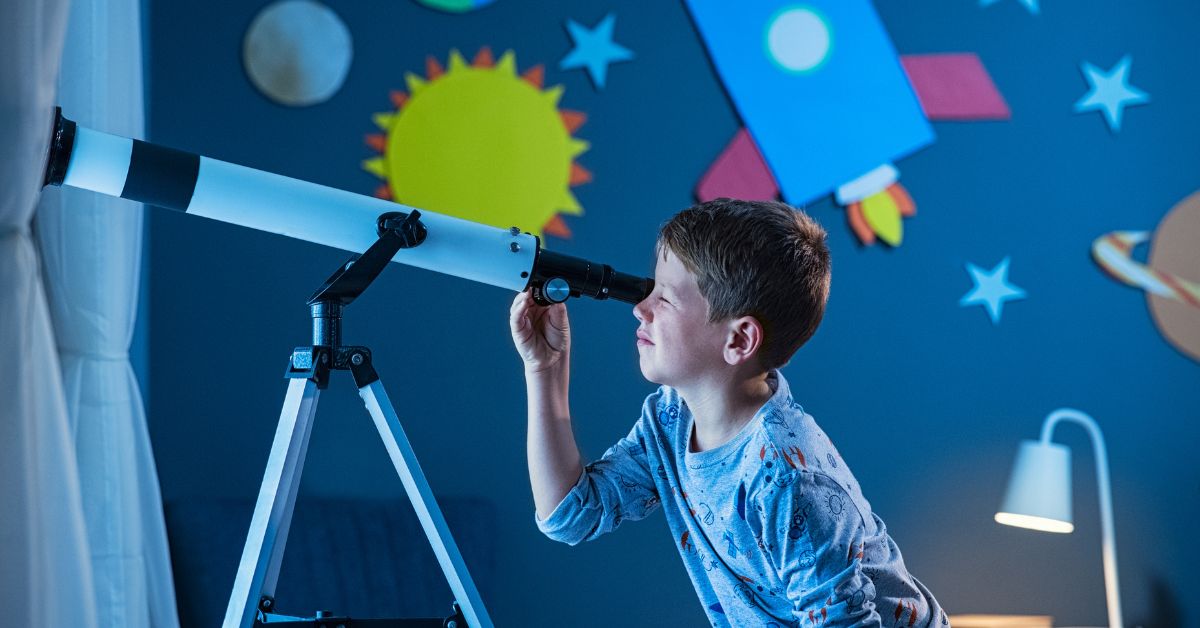Does your child look up at the night sky with a sense of wonder? That twinkling, vast expanse is a natural classroom, and you don’t need a Ph.D. in astrophysics to explore it together. Bringing the cosmos into your home is easier than you think, and creating engaging astronomy lessons for homeschool can spark a lifelong passion for science. Forget stuffy textbooks and complicated charts. We’re going to talk about how to teach the stars in a way that’s fun, hands-on, and totally awe-inspiring for kids of all ages.
From identifying the Big Dipper to understanding what makes a star shine, astronomy is a subject that naturally captures a child’s imagination. It’s a field that combines storytelling, history, science, and art. The ancient Greeks saw heroes and monsters in the constellations, and modern scientists are still uncovering secrets from the farthest reaches of space. By teaching astronomy, you’re not just teaching facts about planets and stars; you’re teaching your kids to ask big questions, to observe the world around them, and to appreciate their place in the universe.
Let’s dive into how you can make your homeschool astronomy lessons truly stellar.
Getting Started: Your Guide To Fun Astronomy Lessons For Homeschool
Before you start building a rocket in your backyard (though that sounds amazing!), it’s best to begin with the basics. The goal here is to build a foundation of knowledge that you can expand upon as your child’s interest grows. You don’t need expensive equipment right away. Your greatest tools are curiosity and a clear night sky.
Start by simply going outside after dark. Find a spot away from bright city lights if you can, lay down a blanket, and just look up. What do you see? Talk about the difference between stars and planets—stars twinkle because their light is distorted by our atmosphere, while planets often have a steadier shine. Point out the moon and discuss its phases. This simple act of observation is the very heart of astronomy.
Here are a few foundational topics and activities to get you started:
- Learn a Few Key Constellations: Don’t try to memorize all 88 constellations at once! Start with a few easy-to-spot ones. The Big Dipper (part of Ursa Major), the Little Dipper (containing Polaris, the North Star), and Orion are great starting points. Use a stargazing app on your phone or print out a simple star chart to help you locate them.
- The Moon’s Many Faces: Track the lunar cycle for a month. Have your child draw the shape of the moon each night in a special “moon journal.” You can discuss why it changes shape, introducing the concepts of orbits and reflected sunlight. The famous “Oreo moon phases” activity is a delicious and memorable way to demonstrate this!
- What is a Star? Explain that stars are giant, fiery balls of gas, and our sun is the closest one to us. You can use simple analogies to explain their massive scale. For example, if the sun were a basketball, Earth would be a tiny pinhead. This helps kids grasp the immense size and distance involved.
- Meet the Solar System: Introduce the planets in our solar system. Create fun mnemonics to help remember their order (e.g., “My Very Eager Mother Just Served Us Noodles”). Learn one interesting fact about each planet. Did you know it rains diamonds on Neptune? Or that a day on Venus is longer than its year?

Hands-On Space Science Activities For Kids
This is where the real fun begins! Astronomy is a wonderfully tactile subject. Getting your hands messy and creating models helps solidify abstract concepts and makes learning unforgettable. These space science activities for kids can be adapted for a wide range of ages, from preschoolers to middle schoolers.
- Constellation Creator: This is a classic for a reason.
- Materials: Black construction paper, a white crayon or chalk, a pushpin, and a flashlight.
- Activity: Have your child draw the dot-to-dot pattern of a constellation on the black paper. Then, use the pushpin to poke holes where the stars are. Take the paper into a dark room, shine the flashlight through the holes, and watch the constellation project onto the wall or ceiling!
- DIY Telescope: While it won’t be as powerful as the Hubble, building a simple refracting telescope is a fantastic project for older kids.
- Materials: You’ll need two convex lenses of different focal lengths (you can find these in science supply kits online), a cardboard tube (like from a paper towel roll), and some tape.
- Activity: Follow an online tutorial to position the lenses correctly within the tube. This project is a great introduction to optics and the basic mechanics of how telescopes work to magnify distant objects.
- Planet Play-Doh: Make the solar system tangible.
- Materials: Different colors of modeling clay or play-doh.
- Activity: Assign a color to each planet and have your kids sculpt them. Pay attention to relative sizes—make Jupiter the biggest and Mercury the smallest. You can talk about each planet’s features as you create it. Is Mars the “Red Planet”? Add some red clay. Does Saturn have rings? Roll out a thin, flat circle of clay to place around it.
- Crater Impact Experiment: This messy activity is always a hit.
- Materials: A shallow tray or baking pan, a layer of flour, a dusting of cocoa powder on top, and various small “meteorites” (marbles, pebbles, small balls).
- Activity: The flour and cocoa powder represent the surface of the moon or a planet. Have your child drop the meteorites from different heights and angles into the tray. They can observe the different types of craters that form and see the “ejecta” patterns created by the displaced cocoa powder.
Taking Your Star Study To The Next Level
Once you’ve covered the basics and enjoyed some hands-on activities, your child might be hungry for more. This is the perfect time to dive deeper into more specific topics. You can explore the life cycle of a star, from a stellar nebula to a supernova or a white dwarf. This is a great opportunity to introduce more complex vocabulary and concepts in an accessible way. Create a visual poster showing the stages or find an engaging documentary that explains the process.
Another fascinating area is the world of galaxies. Explain that our solar system is just one tiny part of the Milky Way galaxy, and that there are billions of other galaxies in the universe. Show them pictures of different galaxy types—spiral, elliptical, and irregular. This can lead to profound conversations about the scale of the universe and humanity’s place within it. You could even do an art project where you create your own spiral galaxy using glitter and glue on black paper, demonstrating the swirling arms of stars.
Don’t forget the human side of astronomy! The history of space exploration is full of thrilling stories of bravery and ingenuity. Learn about the Apollo missions and the first moon landing. Read biographies of famous astronomers like Galileo Galilei, who challenged the beliefs of his time, or astronauts like Neil Armstrong and Sally Ride. These stories add a powerful human element to the science and show kids that real people, driven by curiosity, are behind every discovery.
Find More Homeschooling Gold Here
Your homeschool journey is an adventure, and teaching subjects like astronomy should be one of its brightest highlights. By starting with simple observations, engaging in hands-on activities, and telling the incredible stories of our universe, you can ignite a passion that lasts a lifetime. Remember to follow your child’s curiosity. If they are fascinated by black holes, dive into that topic. If they want to know everything about Mars, make that your focus. The best lessons are the ones driven by genuine interest.
We are dedicated to helping you make your homeschooling experience rewarding and successful. Our blog is filled with practical tips, creative lesson plans, and resources for every subject you can imagine. Keep exploring, keep questioning, and check back often for more ideas to help your homeschool shine.





